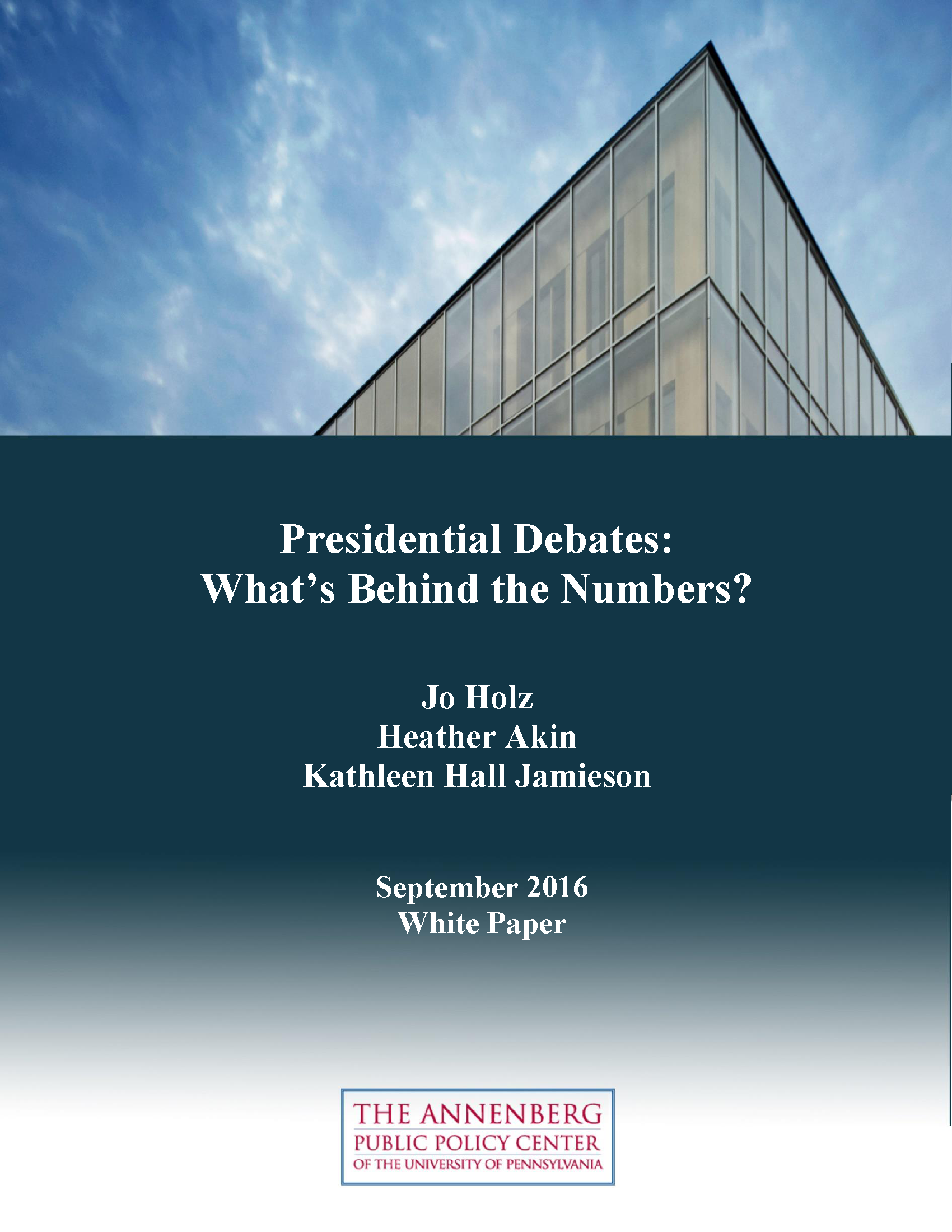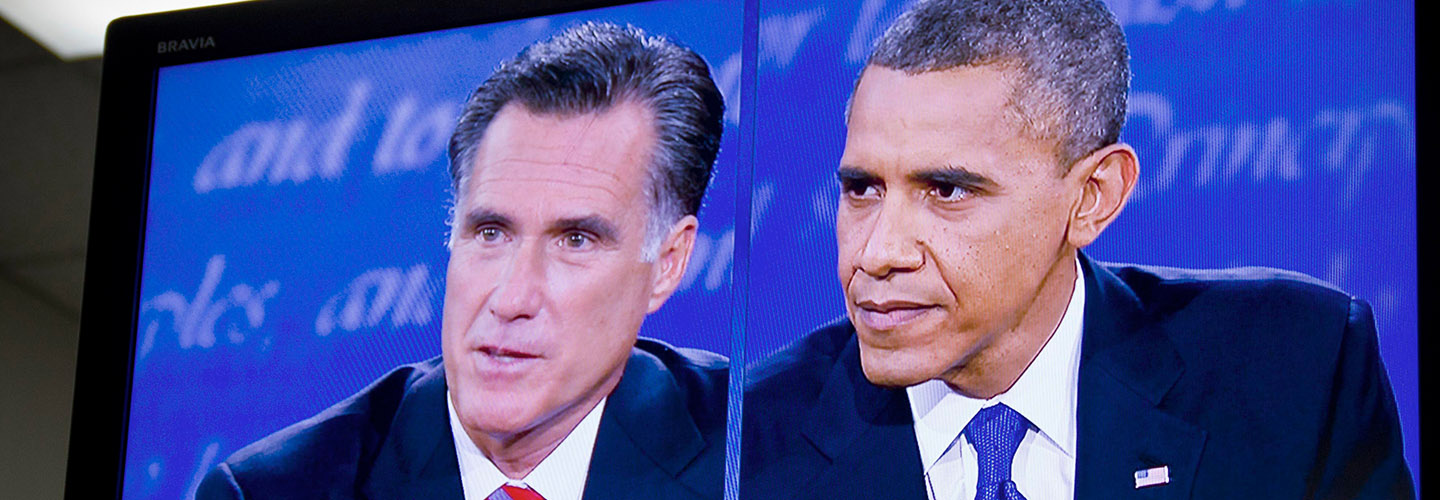Presidential debates are a centerpiece of presidential general elections in the United States. In a new white paper, “Presidential Debates: What’s Behind the Numbers?” researchers from the Annenberg Public Policy Center of the University of Pennsylvania take a close look at the data on the television audience, ratings, and motivations of viewers of general-election presidential debates.

Since the Kennedy-Nixon debate in 1960, the number of viewers watching the general-election presidential debates on television has increased, although the percentage of U.S. households viewing them has declined. In 2012, millions of viewers accessed the debates online through websites and apps. Even so, during the 2012 campaign, about 40 percent of all U.S. households watched the general election presidential debates on TV. Such a high rating — 40 to 50 percent — is usually attained only by blockbuster programming such as the Super Bowl. The first general-election debate between Democratic President Barack Obama and Republican challenger Mitt Romney was viewed on television by 46.2 million households.
As the 2016 general-election debates begin, the white paper offers valuable context by drawing on Nielsen data, a nationwide public opinion survey, and focus groups conducted with voters in Denver by pollster Peter Hart for the Annenberg Public Policy Center (APPC). Researched and written by APPC Director Kathleen Hall Jamieson, former Nielsen executive and former APPC visiting scholar Jo Holz, and APPC postdoctoral fellow Heather Akin, the report examines:
- what the declining proportion of TV viewers means;
- how the demographics of the debate audience are changing;
- better ways to measure debate viewership than ratings;
- why viewers said they watched the debates;
- and which debate format works best for different age groups.
The paper says that 29 percent of those surveyed found the debates were more helpful in deciding how to vote than broadcast interviews with the candidates, news coverage, political talk shows, the campaigns’ official positions and digital media, rallies, and social media discussion.

The survey found that the town hall debate format was preferred to other formats by voters overall (34 percent), and that a larger proportion (40 percent) of voters 18-to-34 years old favored the town hall format than voters 65 and older (28 percent). The phone survey was conducted May 15-21, 2014 with 1,000 registered voters. The margin of error for the full sample is +/- 3 percentage points. (For more details, see the white paper.)
The results of this research informed the deliberations of the Annenberg Debate Reform Working Group, a bipartisan task force made up of top officials from past presidential campaigns. The group was co-chaired by Anita Dunn, a former White House communications director for President Obama and senior advisor to his campaign, and Beth Myers, senior advisor for Mitt Romney’s 2012 presidential campaign and campaign manager for his 2008 race, and was convened by Kathleen Hall Jamieson, director of APPC.
The group’s report, “Democratizing the Debates,” issued in June 2015, recommends reforms to improve the quality of general election presidential debates, increase the value and viewership of those debates, and improve the transparency and accountability of the debate process. That report may be downloaded here.
To download this news release, click here.

